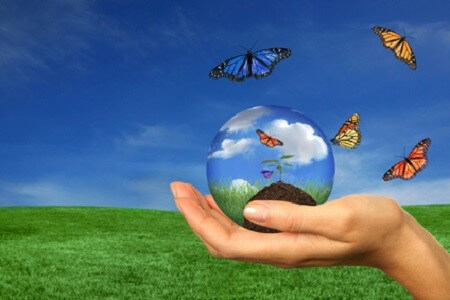
Customer Experience: Nurturing Your Customer Ecosystem
You need to make sure that your customer’s end-to-end journey, their customer experience, is seamless as they move from one stage of their buyer’s journey to the next. So how can you do this?
In order to do this successfully, it’s really helpful to understand your customer ecosystem. And as we heard on a recent webinar with Forrester Research, Inc. (“No More Lip Service: Customer Experience in the Age of the Customer”), the customer experience ecosystem should be viewed as a framework.
Kerry Bodine, Principal Analyst for Customer Experience Management at Forrester Research, Inc., shared an analogy about how the ecosystem in Zion National Park has undergone a really profound change that was totally unforeseen. It’s as poignant an example of the classic “butterfly effect” as I can imagine, a pretty sad story that may resonate with many of you who are faced with dwindling customer segments.
It seems that there are far fewer butterflies today in Zion National Park than there used to be, and scientists have figured out the reason. The Zion National Park had an influx of tourists, and while the Parks Services folks were elated to have more visitors, the foot traffic scared off some of the wildlife. Not the butterflies as you might initially guess. The higher foot traffic initially scared off many of the area’s cougars, who might look ferocious but are actually quite timid. So the cougars retreated from the areas of the park where all the tourists were hanging out. As a result, the deer population increased dramatically. The deer are admittedly super cute and also super hungry. Without their natural predators keeping a check on their feeding habits, they became nearly unstoppable in their quest. That meant that fewer trees were reaching adult maturity and the soil lost its primary source of protection from erosion. The eroding soil made it difficult for the wildflowers to take root and bloom. With fewer wildflowers in the park, the butterflies had little to eat, and so they left.
Zion National Park had a complex ecosystem that experienced an unforeseen chain of events involving tourists, cougars, deer, cottonwood trees, stream banks, wildflowers and butterflies. This chain caused a perfectly healthy and sustainable ecosystem to deteriorate. It took scientist decades to figure out what had caused the butterflies to leave, and that’s because a natural ecosystem comprises complex interdependent relationships that change over time, much like your customer experience ecosystem.
Your customer experience ecosystem is made up of a network of connections between your organization, employees, partners and customers that determines the quality of all customer interactions. You may not know, or may not have known until now, that you are in a customer experience ecosystem.
Kerry went on to remind us that short-term fixes aren’t the way to go, like releasing a drove of new butterflies into the national park and expecting them to thrive even though other conditions in the ecosystem had not changed. To create sustainable, viable customer service improvements, you need to understand and learn how to take control of – and nurture — your customer experience ecosystem.
The important thing to remember is that at each step of the journey there are hundreds of individual touch points through which your employees and your partners are interacting with your customers. Kerry advocates a services design blueprint that identifies these touch points and the requirements for each, and then lays out specific ways to positively influence the activities under each of those touch points. This blueprint helps us see how these touch points are interconnected and create a better sense of flow throughout the customer journey.
It’s critical that you enable your frontline workforce to keep pace and adjust to business conditions in real-time, intraday fashion, to keep from being caught flat-footed. If and when they are, their performance is impacted, customer service suffers and your customer experience ecosphere is affected. That’s why you must unify the experience for your customers. You need to make sure that it is seamless as they move from one stage to the next.
Click the link to view the on-demand webinar, No More Lip Service: Customer Experience in the Age of the Customer, featuring Kerry Bodine of Forrester Research, Inc.
Back to Blog
